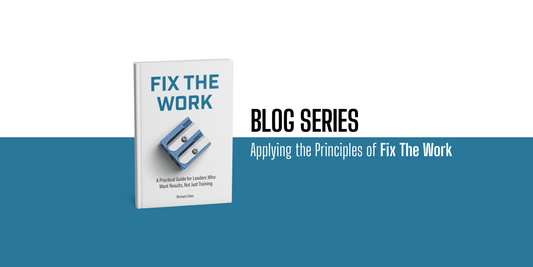They’re Not Judging Your Course. They’re Judging the Experience of Working With You.
Richard SitesShare This Post
Every instructional designer wants to produce something that works. A solid learning product that helps people do their jobs better. A solution that feels thoughtful, clear, and relevant. That is the craft, and yes, quality matters.
But here is something we rarely say out loud: your stakeholders are not primarily evaluating the quality of the final product. They are evaluating the experience of working with you while that product gets made.
They do not always have the expertise to assess whether the strategy is sound or whether the flow is optimal. They are not measuring instructional quality against academic models. They are responding to how it felt to be part of the process. Whether their time was used well. Whether the project moved forward without unnecessary confusion. Whether you helped the work stay on track, even when things got messy.
That experience is what defines your professionalism. Not just what you deliver, but how you deliver it.
And that means your job is not just to build great learning. Your job is also to manage the design and development process in a way that helps everyone else do their part without friction.
You own the product. That is your responsibility. But the process is shared; it touches subject matter experts, managers, legal reviewers, frontline leaders, and sometimes executives. These people do not care about how advanced your storyboard is. They care whether you showed up with a plan. Whether you helped them make decisions. Whether you communicated clearly. Whether their input was used. Whether you created clarity where none existed.
You cannot hand off that responsibility to the product. Even if the final course is good, it cannot make up for a painful, disjointed experience getting there.
What makes this even more important is that most of these contributors are not thinking about your work full-time. They are not immersed in instructional design. They are managing teams, juggling priorities, responding to their own pressures. The smoother you make the process, the more likely they are to stay engaged. The more guidance you provide, the more useful their input becomes. The clearer your expectations, the fewer delays you will face.
Collaboration does not mean letting everyone vote on the design. It means helping people give you what you need, when you need it, in the most efficient way possible.
That is what gets remembered. Not just the training you built, but the way the work felt as it moved.
This matters for more than your reputation. It matters for your long-term influence. If people enjoy working with you, they invite you in earlier. They bring better problems. They respect your role. They trust your guidance. You stop being seen as a production resource and start being treated like a strategic partner.
In many ways, this is where real organizational success happens. Not just at launch, but long before. In the intake meeting that uncovered a better problem. In the early review that prevented wasted time. In the way you guided a reluctant SME to focus on relevance instead of detail. These moments are the invisible work of design. And they matter as much as the final screen.
Learner success is critical. But learner success does not exist without organizational alignment. And organizational alignment is built through how you manage the work.
Professionalism is not defined by clean files. It is defined by clear decisions. By how well you steward the energy of others. By whether your projects create momentum or absorb it.
So yes, build good training. That is your job. But do not forget what earns you credibility.
People remember how the project felt. Whether you led or followed. Whether you simplified or complicated. Whether the process made their day easier or harder.
The product is your craft. The experience is your legacy.
And the best professionals know how to design both.




